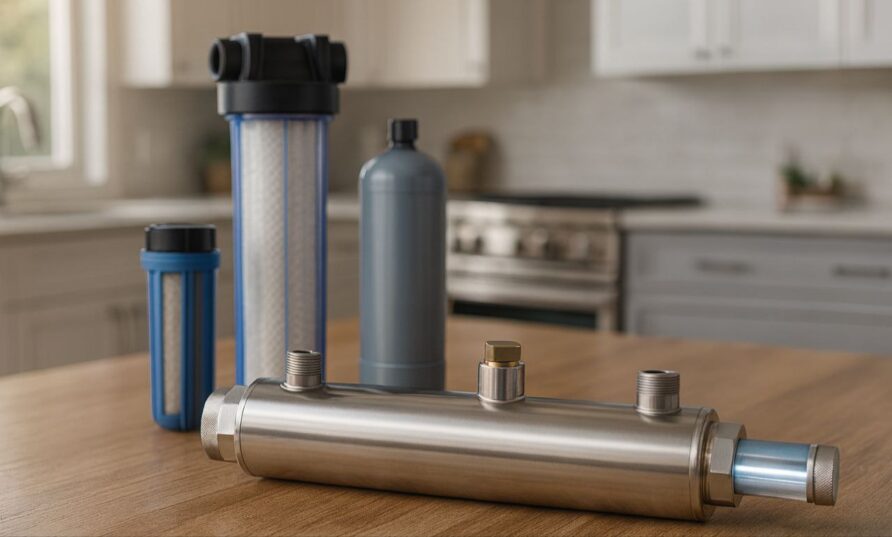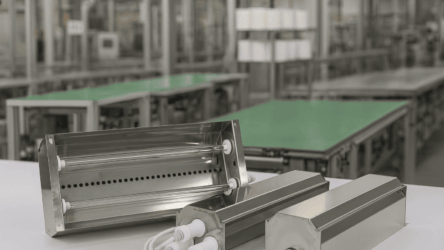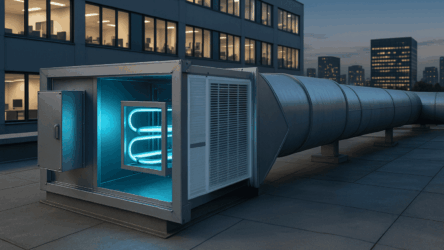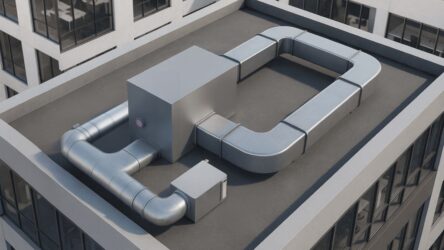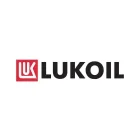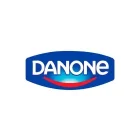Stains on fixtures, scale, odor, or off-taste usually point to dissolved minerals, iron, and possible microbial contamination. Treatment removes particles and chemicals; disinfection neutralizes microorganisms. They complement—never replace—each other.
- Water treatment = mechanical/chemical removal of turbidity, iron, hardness, etc.
- Disinfection = inactivation of bacteria, viruses, and spores so they can’t reproduce.
Know Your Source First
Before choosing equipment, determine where the water comes from—each source has typical pros and cons. Testing your water is the smartest first step; it ensures the filter combination matches your actual parameters and prevents overspending or undersizing.
- Municipal supply: Treated centrally, but aging pipes can introduce hardness salts and iron.
- Well: Common and practical, yet sensitive to bacterial contamination and seasonal swings.
- Sand well (≈15–30 m): Easy to arrange; elevated iron is frequent.
- Artesian well (50 m+): Large reserve and reliability, but water is usually hard and needs post-treatment.
A Practical Home Treatment Train
A single cartridge rarely solves everything. A simple, robust sequence looks like this:
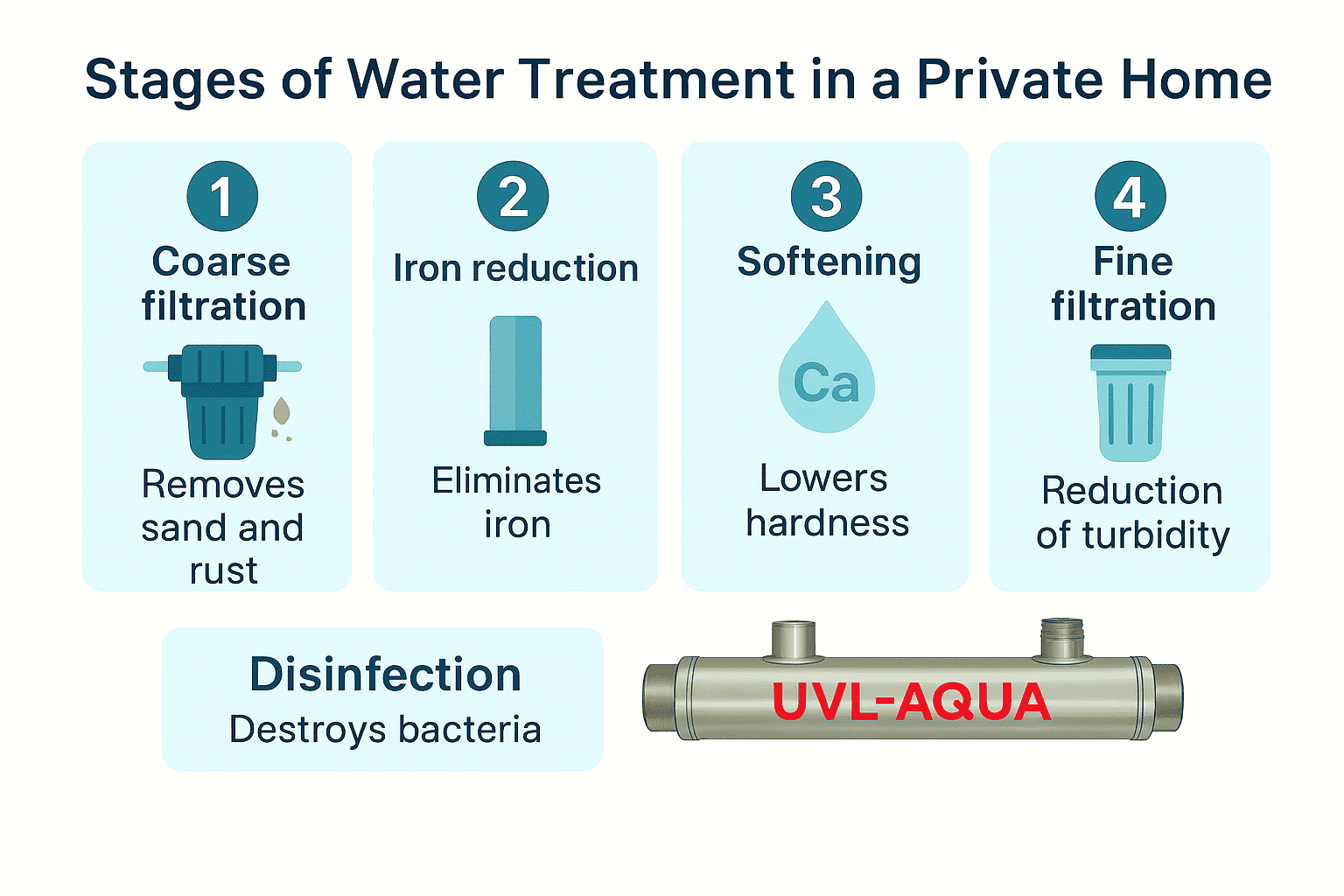
- Sediment / coarse filtration — mesh or backwashable filters remove large particles and protect downstream media.
- Iron reduction — media columns (e.g., manganese dioxide or catalytic aluminosilicates) and, at high Fe, aeration to precipitate iron and reduce deposits.
- Softening — ion-exchange resin replaces Ca/Mg with Na; periodic brine regeneration restores capacity.
- Polishing — a fine cartridge clears residual haze for full clarity.
This makes water visibly clean—but microbes can still persist, especially in stagnant areas inside tanks and columns. That’s why UV disinfection is the finishing step.
Why Finish With UV
A UV disinfection system exposes flowing water to germicidal light (254 nm) that damages microbial DNA/RNA, stopping replication. It’s chemical-free, leaves no by-products, and is ideal for private homes. Position it after the filters: turbidity and color can block UV and foul the quartz sleeve more quickly if placed upstream.
How a home UV sterilizer works: water passes through a stainless-steel chamber; an ultraviolet lamp sits inside a quartz sleeve to keep it dry while an electronic ballast powers the lamp at stable output.
Operating Rules That Actually Matter
- Install last in line so the germicidal lamp sees clear water and the sleeve stays clean longer.
- Run continuously (not only on a flow switch): UV lamps reach full germicidal output a couple of minutes after ignition; frequent on/off shortens life and can reduce dose.
- Watch pressure and flow so the UV dose matches the rated capacity.
Service basics: replace the UV lamp annually (≈9,000–12,000 h depending on type), clean the quartz sleeve with citric/oxalic acid if mineral film appears, and add a bypass so the house can stay supplied during maintenance.
A Real-World Hint
Even in a treated well system, odors or bacterial counts can pop up in expansion tanks or low-flow loops. In one private home, adding a UV water sterilizer downstream of the filters solved a recurrent contamination issue without changing the rest of the setup.
Common Mistakes (and Easy Fixes)
- Skipping lab tests → mismatched sizing and wasted budget.
- Wrong order of stages → always place the UV sterilizer at the final step.
- Delaying consumable changes → performance drifts and hygiene suffers.
Choosing a Home UV System
Select by required flow and target dose. A family home can be covered by a compact inline unit (for example, ranges comparable to UVL-AQUA 8 - UVL-AQUA 180, scaled to consumption). Look for: ozone-free amalgam lamps or low-pressure UV lamps, a polished chamber, a reliable electronic ballast, and easy access to the quartz sleeve for cleaning.

